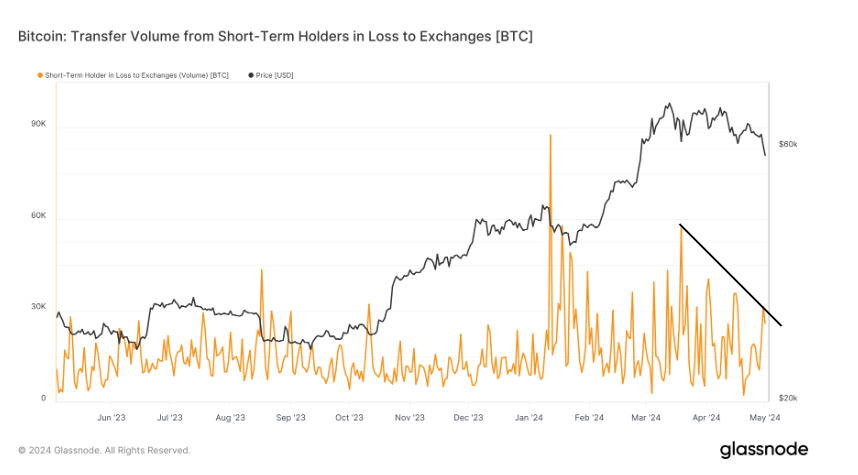Latest news about Bitcoin and all cryptocurrencies. Your daily crypto news habit.
On-chain data suggests the Bitcoin short-term holders haven’t been capitulating during the crash, a sign that a shift has occurred in the market.
Bitcoin Short-Term Holders Haven’t Been Doing Much Loss-Selling Recently
As pointed out by analyst James Van Straten in a post on X, the BTC short-term holders haven’t been sending much BTC at a loss recently, despite the plunge the asset’s price has suffered.
The “short-term holders” (STHs) refer to the Bitcoin investors who bought their coins within the past 155 days. These investors make up one of the two main divisions of the BTC market, with the other cohort being known as the “long-term holders” (LTHs).
Statistically, the longer an investor holds their coins, the less likely they are to sell at any point. As such, the LTHs are considered the resolute side of the market, while the STHs are considered the weak hands.
Generally, the STHs easily sell whenever a change in the market happens, like a crash or rally. As such, these investors could be expected to have participated in some selling during the latest plummet in the coin as well.
One way to track whether these investors are selling or not is to track their exchange deposits. Holders don’t always deposit to these platforms for selling, as they offer other services as well, but inflows during a rally/crash are more often than not an indication of a selloff.
In the current discussion, the entire exchange transfer volume for this cohort isn’t of interest, but only the part of it that’s being deposited at a loss. As Straten has highlighted in the chart below, a curious pattern has emerged in this loss exchange inflow volume for the STHs.
As displayed in the above graph, the Bitcoin transfer volume from the STHs in loss to exchanges registered a huge spike back in January, as the market downturn following the approval of the spot exchange-traded funds (ETFs) occurred.
In the price decline that followed the top in May, the metric also registered a large spike, although notably smaller in scale than the January one. It would appear that during both of these drawdowns, the STHs had shown a significant capitulation reaction.
During the latest crash, however, the trend doesn’t appear to have been the same. “What is really interesting is that in these past two days, Bitcoin dropped 12%, but STHs sent very little Bitcoin to exchanges at a loss,” notes the analyst.
This would suggest that these weak hands have gained some strength recently. “Lettuce hands are becoming slightly less erratic, signs of a maturing market,” says Straten.
BTC Price
Bitcoin has shown some recovery from the crash during the past 24 hours as its price has now returned back to the $60,700 level.
Disclaimer
The views and opinions expressed in this article are solely those of the authors and do not reflect the views of Bitcoin Insider. Every investment and trading move involves risk - this is especially true for cryptocurrencies given their volatility. We strongly advise our readers to conduct their own research when making a decision.
